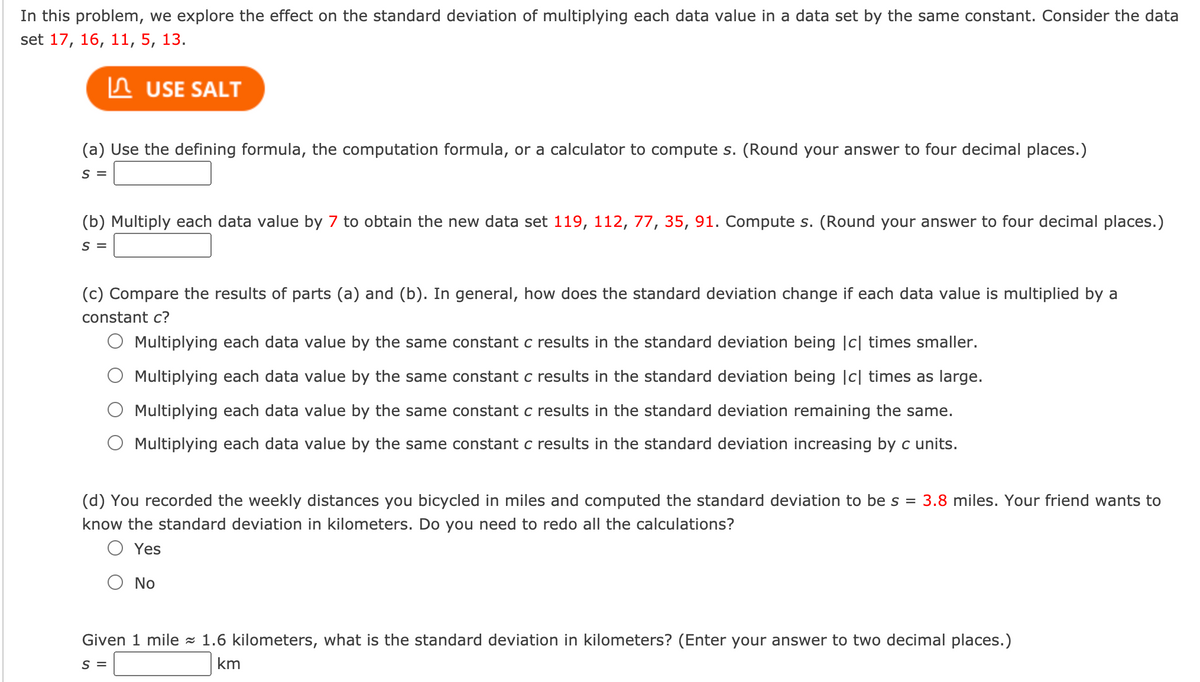In this problem, we explore the effect on the standard deviation of multiplying each data value in a data set by the same constant. Consider the data set 17, 16, 11, 5, 13. n USE SALT (a) Use the defining formula, the computation formula, or a calculator to compute s. (Round your answer to four decimal places.) S = (b) Multiply each data value by 7 to obtain the new data set 119, 112, 77, 35, 91. Compute s. (Round your answer to four decimal places.) S = (c) Compare the results of parts (a) and (b). In general, how does the standard deviation change if each data value is multiplied by a constant c? O Multiplying each data value by the same constant c results in the standard deviation being |c| times smaller. O Multiplying each data value by the same constant c results in the standard deviation being |c| times as large. O Multiplying each data value by the same constant c results in the standard deviation remaining the same. O Multiplying each data value by the same constant c results in the standard deviation increasing by c units. (d) You recorded the weekly distances you bicycled in miles and computed the standard deviation to be s = 3.8 miles. Your friend wants to know the standard deviation in kilometers. Do you need to redo all the calculations? O Yes O No Given 1 mile = 1.6 kilometers, what is the standard deviation in kilometers? (Enter your answer to two decimal places.) S = km
Inverse Normal Distribution
The method used for finding the corresponding z-critical value in a normal distribution using the known probability is said to be an inverse normal distribution. The inverse normal distribution is a continuous probability distribution with a family of two parameters.
Mean, Median, Mode
It is a descriptive summary of a data set. It can be defined by using some of the measures. The central tendencies do not provide information regarding individual data from the dataset. However, they give a summary of the data set. The central tendency or measure of central tendency is a central or typical value for a probability distribution.
Z-Scores
A z-score is a unit of measurement used in statistics to describe the position of a raw score in terms of its distance from the mean, measured with reference to standard deviation from the mean. Z-scores are useful in statistics because they allow comparison between two scores that belong to different normal distributions.

Variance: The variance (σ) is the expectation of the squared deviation of the random variable from its mean (x) value. from the variance, we can conclude that the how far set of numbers is spread out from their average value (Mean).
The formula for sample Standard deviation:
Where,
x: Random samples.
: Sample mean.
n: Sample size.
Trending now
This is a popular solution!
Step by step
Solved in 5 steps with 2 images


